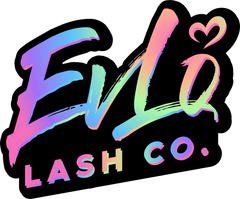FAQ Halo UV LED System
The HALO LED Lash System uses an adhesive that’s cured using the included LED light. Once the adhesive is exposed to the light, it cures almost instantly.
In rare cases, an allergic reaction can occur for extremely sensitive clients. The adhesive does contain cyanoacrylate however since it is instantly cured with the included LED light, it’s less likely for most clients to experience irritation or an allergic reaction.
As the adhesive still contains cyanoacrylate, lash extensions can be removed using the peel off method or using a traditional adhesive remover.
The Halo LED Lash System has undergone extensive testing and is safe. It uses a low level UV of 395-400nm that is both eye and skin safe as long as you don’t look directly into the light. In addition to this, it has the following safety certificates CE, FCC, ROHS, LVD, and EMC. It has been tested by third parties, reviewed by an ophthalmologist and deemed safe for the skin and eyes.
As long as safety instructions are followed, it will not harm the eyes or skin. You and your client should avoid looking directly into the light. Although not necessary, you can also wear the included UV400 safety glasses while using the system. The provided UV blocking tape is also another great safety protection to help keep the clients eyes closed and to block additional LED light.
The adhesive is good 3 months opened, 6 months unopened, if stored properly.
Yes, the Halo LED Lash System can be used with ANY lash extensions.
No. You can continue to use your LED lamp with this system. The adhesive requires a specific kind of light in order to cure.
Yes. The adhesive is oil resistant so it’s great for clients that wear heavy makeup, use oily skincare products or have oily skin. Just be sure to properly prepare the clients lashes by cleaning and priming prior to lash application.
Approx 30,000 hours
It’s recommended that the light is 4-7 inches away from the area you’re working on for the best results
Pregnant or breastfeeding women unless approved by a doctor. The system should not be used if the treated person has any of the following symptoms in the area of the eye where the light from the system may shine: Abrasions Keloid or unhealed scars Herpes Psoriasis Other infectious or inflammatory skin diseases Fungal infections Wounds Sunburn Neurodermatitis Skin cancer The system should not be used if the user or the person being treated has the following symptoms: Thyroid disease Epilepsy Polymorphous light dermatosis Photosensitivity, radiation or chemotherapy Hemophilia If an IPL or laser treatment has been performed in the treatment area in the past 21 days or if surgical procedures have been performed in the treatment area in the past 3 months. The system should not be used if the user or the treated person is taking photosensitizing medication such as: Neuroleptics Systemic dermatitis Antiepileptics Antihistamines Cytotoxic agents Antipsychotics Non-steroidal anti-inflammatory drugs Light sensitizing agents (PDT) Vitamin A derivatives (retinoids) Suffers from lupus erythematosus Photosensitive eczema in the treatment area Albinism
